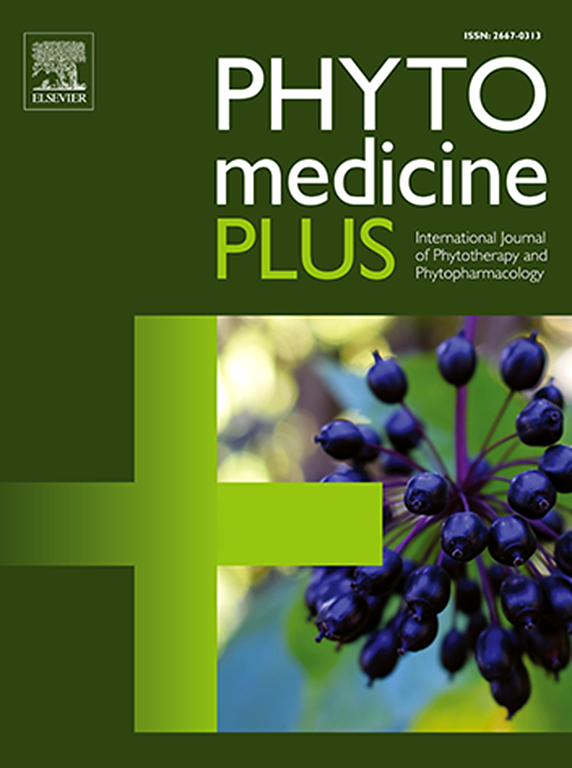Multi-ligand simultaneous docking of Carica papaya leaf phytochemicals, Carpaine and Rutin reveal multi-mechanism inhibition of cancer proteins, BCL-2 and WWP1
Q3 Pharmacology, Toxicology and Pharmaceutics
引用次数: 0
Abstract
Cancer remains a major global health concern due to chemotherapy resistance and toxicity from high-dose treatments. To overcome these challenges, new therapeutic strategies targeting key proteins in cancer progression are essential. This study evaluates two phytochemicals, Carpaine (Car) and Rutin (Rut), from Carica papaya leaves, for their potential in enhancing cancer therapy by targeting B-cell lymphoma 2 (BCL-2) and WW domain-containing protein 1 (WWP1) proteins. We assessed their additive, allosteric, and synergistic effects using molecular docking, multi-ligand simultaneous docking (MLSD), molecular dynamics (MD) simulations, and MMPBSA analysis. Car and Rut showed an additive effect on BCL-2 by binding at distinct regions within the same pocket. MLSD revealed an improved binding affinity of -13.13 ± 0.08 kcal/mol, individual ligands or the commercial inhibitor Venetoclax. For WWP1, Car bound near the H-site and Rut near the Le-site, exhibiting an allosteric effect that increased Car’s binding affinity in MLSD to -15.59 ± 0.39 kcal/mol. Furthermore, Rut combined with bortezomib (Bortezomib) demonstrated a synergistic interaction with WWP1. Binding energies were -7.64 ± 0.156 kcal/mol for Bort, -10.26 ± 0.07 kcal/mol for Rut, and -15.59 ± 0.39 kcal/mol for MLSD, suggesting a more stable complex through synergy. These results suggest Car and Rut, particularly in combination with Bort, as promising candidates against cancer-related proteins BCL-2 and WWP1. Further experimental validation is warranted to explore their therapeutic potential.
木瓜叶片植物化学物质Carpaine和芦丁的多配体同时对接揭示了对肿瘤蛋白BCL-2和WWP1的多机制抑制作用
由于化疗耐药性和高剂量治疗的毒性,癌症仍然是一个主要的全球健康问题。为了克服这些挑战,针对癌症进展中的关键蛋白的新治疗策略是必不可少的。本研究评估了番木瓜叶中的两种植物化学物质,Carpaine (Car)和Rutin (Rut),它们通过靶向b细胞淋巴瘤2 (BCL-2)和WW结构域蛋白1 (WWP1)蛋白来增强癌症治疗的潜力。我们通过分子对接、多配体同步对接(MLSD)、分子动力学模拟(MD)和MMPBSA分析来评估它们的加性、变构和协同效应。Car和Rut在同一口袋内的不同区域结合,对BCL-2表现出加性效应。MLSD与单个配体或商业抑制剂Venetoclax的结合亲和力为-13.13±0.08 kcal/mol。对于WWP1, Car在h位点附近结合,Rut在le位点附近结合,表现出变弹性效应,使Car在MLSD中的结合亲和力提高到-15.59±0.39 kcal/mol。此外,Rut联合硼替佐米(bortezomib)与WWP1表现出协同相互作用。bolt的结合能为-7.64±0.156 kcal/mol, Rut的结合能为-10.26±0.07 kcal/mol, MLSD的结合能为-15.59±0.39 kcal/mol。这些结果表明,Car和Rut,特别是与BCL-2和WWP1结合,是抗癌相关蛋白BCL-2和WWP1的有希望的候选者。进一步的实验验证是必要的,以探索其治疗潜力。
本文章由计算机程序翻译,如有差异,请以英文原文为准。
求助全文
约1分钟内获得全文
求助全文
来源期刊

Phytomedicine Plus
Medicine-Complementary and Alternative Medicine
CiteScore
3.70
自引率
0.00%
发文量
178
审稿时长
81 days
期刊介绍:
 求助内容:
求助内容: 应助结果提醒方式:
应助结果提醒方式:


